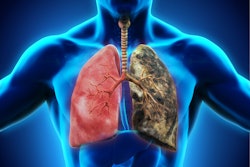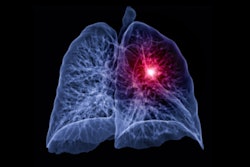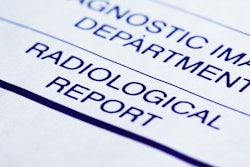At least 15% of surgeries patients undergo after lung cancer screening are performed on benign lesions, according to research shared November 26 at the recent RSNA meeting.
A team led by presenter Raquelle El Alam, MD, of Brigham and Women's Hospital in Boston, found that despite the application of Lung-RADS guidelines, surgical resection of benign nodules identified on low-dose CT (LDCT) does happen.
"Screening with LDCT reduces lung cancer mortality, [but] false positive results are unavoidable," she said.
Lung cancer screening with LDCT has been shown to reduce lung cancer deaths – and the pool of individuals eligible for screening was expanded by the U.S. Preventive Services Task Force (USPSTF) in 2021. But lung cancer screening does produce false-positive results.
She and colleagues measured the rate of surgery for benign nodules and tracked tumor characteristics via research that included lung cancer screening data from 9,050 patients who underwent 21,366 LDCT exams between May 2015 and October 2021; of these, 260 underwent surgery. The researchers reviewed pathology reports and patient follow-ups to determine whether identified nodules were benign or malignant; only benign nodules were considered in their research. The team also tracked Lung-RADS category, nodule status, and FDG uptake on PET/CT.
Of the 260 patients who had surgery for a suspicious lung nodule, 220 were diagnosed with cancer (85%); two with other malignancies (1%), and 38 with benign nodules (15%). Of the benign nodules, 12 were identified as scarring or fibrosis, five as benign neoplasms, 14 as infection or inflammation, and seven as other diagnoses.
The group found that the size of the nodules ranged from 4 mm to 41 mm. In terms of nodule features, two (5%) were ground glass, 10 (26%) were part-solid, and 26 (68%) were solid. Of the 38 benign cases, 19 patients underwent FDG-PET/CT: of these, two (11%) had no uptake, 10 (53%) had mild uptake, three (16%) had moderate uptake, and four (21%) had intense uptake.
Lung-RADS categories of the nodules consisted of the following:
- Four (11%) Lung-RADS 2
- Two (5%) Lung-RADS 3
- 11 (29%) Lung-RADS 4A
- 13 (34%) Lung-RADS 4B
- Eight (21%) Lung-RADS 4X
The truth is, benign lung nodules found on LDCT can share imaging features with malignant ones, El Alam noted.
"Surgeries for benign pulmonary nodules are an inevitable part of a lung cancer screening program due to overlap between the appearance of benign and malignant pulmonary nodules," she concluded.




















